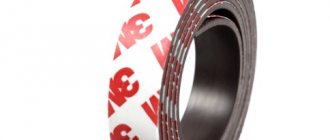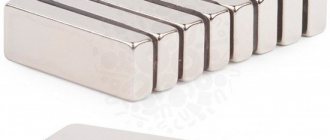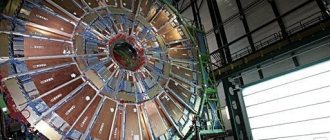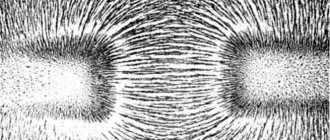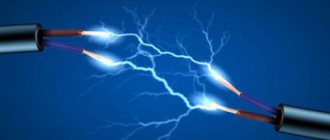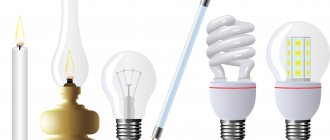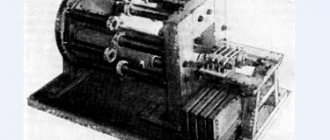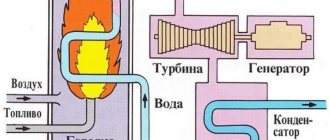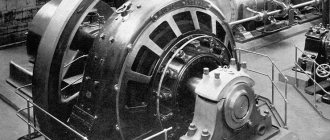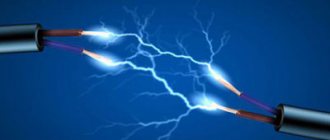Neodymium magnets are the most powerful magnetic material of the new generation today, which has found wide application in many branches of science and technology, as well as in everyday life. Each of us today can encounter them in everyday life, be it buying holders for a refrigerator, headphones, a metal detector, or a computer hard drive in which they are also used.
Neodymium is an active and fairly hard rare earth metal, which, when combined with iron and boron, acquires an incredibly high magnetization ability. This NdFeB alloy, first obtained in 1982, is used to make neodymium magnets of various shapes and sizes. Strong little magnets are most likely located near you right now, for example in your computer or smartphone.
What are neodymium magnets capable of?
Their main advantage over ferrite and other permanent magnets known to man is the high efficiency of the generated magnetic field, which is approximately 10 times higher than that of analogues. At the same time, the process of their demagnetization occurs very slowly - only 5% every 100 years, respectively, and their service life is practically unlimited, that is, they are “permanent” in the literal sense of the word.
Due to their powerful adhesion force to metals, neodymium magnets can hold objects that are 50 and even 100 times their own weight. For example, to unhook a magnetic cube with a side of 5 mm from a metal product, you will need to apply a force of 1 kg. Tiny disc or rectangular magnets can be used as magnetic holders for objects, eliminating the usual mounting methods such as screwing or gluing.
Did you know?
A magnet disk with a diameter of 8 mm and a thickness of 5 mm weighs only 2 grams and at the same time creates a force of more than 1.7 kilograms!
Recommendations
- “What is a strong magnet?” Magnetic Matters Blog
. Adams magnetic products. October 5, 2012. Retrieved October 12, 2012. - ^ a b
Fraden, Jacob (2010).
Handbook of Advanced Sensors: Physics, Designs and Applications, 4th ed.
. USA: Springer. paragraph 73. ISBN 978-1441964656. - ^ a b c d f f
Lucas, Jacques;
Lucas, Pierre; Le Mercier, Thierry; and others. (2014). Rare earths: science, technology, production and use
. Elsevier. pp. 224–225. ISBN 978-0444627445. - M. Sagawa; S. Fujimura; N. Togawa; H. Yamamoto; Y. Matsuura (1984). "New material for permanent magnets based on Nd and Fe (invited)." Journal of Applied Physics
.
55
(6): 2083. Bibcode:1984JAP…. 55.2083S. doi:10.1063/1.333572. - J. J. Croat; J. F. Herbst; R. W. Lee; F. E. Pinkerton (1984). "Pr-Fe and Nd-Fe based materials: a new class of high-performance permanent magnets (invited)." Journal of Applied Physics
.
55
(6): 2078. doi:10.1063/1.333571. - “What are neodymium magnets?” WyGEEK website
. Conjecture Corp.2011. Retrieved October 12, 2012. - ^ a b
Sintered NdFeB Magnets, What are Sintered NdFeB Magnets? - NdFeB Bonded Magnets, What are NdFeB Bonded Magnets?
- ^ a b
Chew, Stephen.
Critical Materials Strategy US Department of Energy
, December 2011 Accessed: December 23, 2011 - Peter Robison and Gopal Ratnam (29 September 2010). "Pentagon Loses Control of Bombs to Chinese Metal Monopoly." Bloomberg News. Retrieved March 24, 2014.
- "Funding Research into Rare Earth Free Permanent Magnets." ARPA-E. Retrieved April 23, 2013.
- Overland, Indra (2019-03-01). "The Geopolitics of Renewable Energy: Debunking Four Emerging Myths." Energy Research and Social Sciences
.
49
: 36–40. doi:10.1016/j.erss.2018.10.018. ISSN 2214-6296. - Chikazumi, Soshin (2009). Physics of ferromagnetism, 2nd ed.
. OUP Oxford. paragraph 187. ISBN 978-0191569852. - "Magnetic anisotropy". The Hitchhiker's Guide to Magnetism. Retrieved March 2, 2014.
- Boysen, Earl; Muir, Nancy S. (2011). Nanotechnology for Dummies, 2nd ed.
. John Wiley and Sons. paragraph 167. ISBN 978-1118136881. - How to understand the grade of NdFeB sintered magnet?, Brands of NdFeB sintered magnets
- "Table of magnet brands." Amazing Magnets, LLC. Retrieved December 4, 2013.
- “Brands of Neodymium Magnets” (PDF). Everbin Magnet. Retrieved December 6, 2015.
- “What is the maximum energy/BHmax product and how does it compare to the brand of magnet? | Dura Magnetics USA. Received 2020-01-20.
- ^ a b
Hybrid cars gobble up rare metals and there's a shortage, Reuters, August 31, 2009. - Juha Pirhönen; Tapani Jokinen; Valeria Grabovtsova (2009). Design of rotating electrical machines
. John Wiley and Sons. p. 232. ISBN 978-0-470-69516-6. - Typical physical and chemical properties of some magnetic materials, Comparison and selection of permanent magnets.
- Drak, M.; Dobzhansky, L.A. (2007). "Corrosion of Nd-Fe-B Permanent Magnets" (PDF). Journal of Advances in Materials Science and Engineering
.
20
(1–2). Archived from the original (PDF) on 2012-04-02. - Gauder, D. R.; Froning, M. H.; White, R.J.; Ray, A. E. (April 15, 1988). "Study of elevated temperatures of magnets based on Nd-Fe-B with additions of cobalt and dysprosium." Journal of Applied Physics
.
63
(8):3522–3524. doi:10.1063/1.340729. - Swain, Frank (29 March 2022). “How to remove your finger using two super magnets.” Sciencepunk Blog
. Seed Media Group LLC. Retrieved 2009-06-28. - “CPSC Warning: Ingestion of magnets may cause serious intestinal injury” (PDF). US Consumer Product Safety Commission. Archived from the original (PDF) on January 8, 2013. Retrieved December 13, 2012.
- "Production process for sintered neodymium magnets." Applied Materials Corporation of America. Archived from the original on 2015-05-26.
- "The world's first neodymium magnet that controls the orientation of the magnetic field." Nitto Denko Corporation. August 24, 2015. Retrieved September 28, 2015.
- "A powerful magnet that can be molded like clay." Asahi Shimbun. August 28, 2015. Archived from the original on September 28, 2015. Retrieved September 28, 2015.
- “Permanent Magnet Market 2015” (PDF). Magnetics 2013 Conference
. Conference "Magnetism 2013". February 7, 2013. Retrieved November 28, 2013. - Isaac, Adam (19 October 2022). “A rare metal called neodymium is used in your headphones, cell phones and electric cars like the Tesla Model 3, and China controls the global supply.” CNBC
. - “How it’s made - neodymium magnets - via www.youtube.com.
- Constantinides, Steve (2012). "Demand for Rare Earth Materials in Permanent Magnets" (PDF). www.magmatllc.com
. Steve Constantinides. Archived from the original (PDF) on March 29, 2018. Retrieved March 26, 2022. - "Industrial Magnets and Design for Process Protection - PowderProcess.net."
- "Settings Guide". United parachute technologies. Archived from the original on July 17, 2011.
- O'Donnell, Jane (26 July 2012). “Feds File Lawsuit Against Buckyballs, Retailers Ban Product.” USA Today
. - "Health Canada will ban the sale of Buckyball magnets." CTVNews
. 2013-04-16. Retrieved 2018-08-22. - Elster, Allen D. "MRI Magnet Design." Questions and answers in MRI
. Received 2018-12-26. - "Analysis of the Safety and Efficacy of TAVAC: The LINX® Reflux Management System." Archived from the original on February 14, 2014.
- "Linx Reflux Management System: Stop Reflux at its Source." Thorax Medical Inc.
- Dvorsky, Georgy. "What you need to know about magnetic finger implants." Retrieved 2016-09-30.
- I. Harrison, K. Warwick and V. Ruiz (2018), “Subdermal magnetic implants: an experimental study,” Cybernetics and Systems, 49 (2), 122-150.
Magnet adhesion force for detachment and shear
Neodymium magnet as a hanger
Adhesive strength is an important characteristic of a neodymium magnet that you should pay attention to when choosing one. It is important to select a product with a certain power reserve. There are two types of adhesive force: peel and shear. Which of the two characteristics is more important depends on the tasks that the magnet performs.
- Pull-off adhesive force
is the force that must be applied to lift a magnetic material from a surface. The characteristics of the product indicate its attractive force under ideal conditions, under which it is completely adjacent to a smooth, even steel sheet with a thickness of at least 20 mm and is torn away from it at a right angle. Since in practice the conditions are far from ideal, the holding force in reality will be lower than declared. - Shear adhesive force
is applied when the magnet moves along the surface of the product. This parameter is approximately 15-50% of the pull-out force. If the load is higher than the declared characteristics, then the object will slide along the vertical surface. For example, a rectangular magnet 20x10x4 mm can withstand a pull-out load of 4 kg, but when used for shear, its maximum load will be 1.8 kg. For many applications, shear force is the main characteristic of a neodymium magnet.
Traction force depends on many factors. For example, on a rough surface it is slightly lower than on a smooth and even surface. The thinner the metal on which the magnet is attached, the weaker it will hold. Objects do not always completely adhere to the magnetic surface, and the larger the area of their contact, the stronger the attraction.
But there are other factors that should not be forgotten. For example, not all metals and alloys are magnetic in the same way. If the product is painted, has a polymer coating or rust, then the adhesion force will also decrease somewhat. It is also necessary to pay attention to the class of neodymium alloy. The higher its serial number, the higher the magnetic energy. For example, N45 > N38.
Thus, the adhesive strength of a magnet depends on the following main factors:
- product size;
- magnetic alloy class;
- fastening method - pull-off or shear;
- thickness and roughness of the metal base;
- contact areas of contact surfaces;
- presence of paint and varnish coatings and rust.
To make it easier to separate two magnets, apply force not to separate, but to shear.
Corrosion problems
These neodymium magnets were severely corroded after five months of weather conditions.
Sintered Nd2Fe14B is generally vulnerable to corrosion, especially along the grain boundaries of the sintered magnet. This type of corrosion can cause severe damage, including turning the magnet into a powder of fine magnetic particles or chipping the surface layer.
This vulnerability is addressed in many commercial products by adding a protective coating to prevent exposure to the atmosphere. Nickel plating or two-layer copper-nickel plating are standard methods, although plating with other metals or polymer and varnish protective coatings are also used.[23]
What is the class of neodymium magnet?
Confused about what the letters and numbers on a magnet mean? – The letter “N” is the grade of the alloy, and the number behind it indicates the class - the maximum magnetic force in megaGauss-Oersted (1 megaGauss-Oersted ≈ 0.8 kgf). On sale, as a rule, there are products made from materials from N35 to N52. The most popular classes are N38 and N45. Higher grades should be used where very strong adhesion is required and the available magnet space is limited. Otherwise, it is more profitable to use two N38 magnetic holders instead of one N52.
Table. Alloys and their magnetic properties.
| Brand/Class | Residual magnetic induction, mT (kG) | Coercive force, kA/m (CE) | Magnetic energy, kJ/m3 (MGsE) |
| N35 | 1170-1220 (11,7-12,2) | ≥955 (≥12) | 263-287 (33-36) |
| N38 | 1220-1250 (12,2-12,5) | ≥955 (≥12) | 287-310 (36-39) |
| N40 | 1250-1280 (12.5-12.8) | ≥955 (≥12) | 302-326 (38-41) |
| N42 | 1280-1320 (12,8-13,2) | ≥955 (≥12) | 318-342 (40-43) |
| N45 | 1320-1380 (13,2-13,8) | ≥876 (≥12) | 342-366 (43-46) |
| N50 | 1400-1450 (14.0-14.5) | ≥876 (≥11) | 382-406 (48-51) |
| N52 | 1430-1480 (14,3-14,8) | ≥876 (≥11) | 398-422 (50-53) |
How long does magnetism last?
Any material is attractive for its positive properties and the duration of their action. The ferrite analogue tends to demagnetize quite quickly; its field is barely enough for ten years. A real, modern magnet, as practice has confirmed, can lose only 1-2% of its strength during this time. Neodymium magnets, whose service life is almost unlimited, are irreplaceable and highly desirable in any product.
The enormous power of the product is directed towards everything metallic. The random attraction of objects creates dangerous situations, both for production and for human health. The point is that you can’t count on such a device to demagnetize on its own. In emergency situations, you should contact specialists to eliminate or neutralize the negative consequences, since only they know how to demagnetize a neodymium magnet.
Effect of temperature on magnetic properties
Neodymium magnets “love” the cold, and their effectiveness does not weaken even at -130°C. Manufacturers must indicate the maximum operating temperature in the product characteristics. This is the temperature above which a magnetic material begins to lose its magnetism, either temporarily or permanently.
All N (Normal) brands usually operate at temperatures up to +80°C and lose, as a rule, 0.11% of energy when the temperature is exceeded by 1°C. Small losses will be recovered by cooling, but frequent heating and cooling cycles will degrade magnetic performance. Additionally, a rapid transition from cold to warm can cause the magnet to break or crack.
Features of operation:
- Does not tolerate strong direct blows.
- Does not withstand high temperatures; for household alloys the temperature should not exceed 80 degrees.
- Doesn't like humidity. Prolonged contact with moisture leads to corrosion.
If a magnet is subjected to any of these influences, its adhesive strength is lost and cannot be restored, so careful handling and transportation is required so that the purchased sample can serve you forever. When receiving a neodymium magnet by mail, the product will not be damaged during delivery, since under standard conditions the product has virtually no loss of adhesive force.
In order to be sure of the authenticity of the purchase and the good quality of the purchased products, it would be advisable to decide to buy neodymium magnets with cash on delivery. In this case, you will be able to check whether the product corresponds to the declared properties before paying for it.
Where can neodymium magnets be used?
Since their creation, they have confidently held the title of the most powerful and resistant to demagnetization magnets. Without them, many of the latest scientific developments in the field of motor engineering, medicine and electronics would be impossible. They are also useful for home, office work, hobbies, modeling and jewelry making.
Examples of everyday use - useful ideas
- For fixing plates, signs, hooks, shelves, photographs, artwork, and other interior elements.
- As holders for mosquito nets, screws on various tools, souvenirs or notes on the refrigerator.
- For organizing the storage of tools in the workshop, keys, knives, and various small items.
- For collecting small metal products in hard-to-reach places and removing metal debris.
- Cleaning engine and transmission oils.
- Inspection of walls for the presence of hardware inside.
- As locks for cabinet doors, hatches, and box lids.
- Manufacturing of devices for washing windows from the outside.
- Small magnets are used in the manufacture of handmade cards and folders, jewelry, and bag clasps.
- When conducting experiments and tricks.
- Using fastening magnets, you can secure a flashlight in the desired position, objects on a car body, a tarpaulin cover covering equipment, or a tablecloth on an outdoor table.
- Production of magnetic tiebacks for curtains.
- In needlework, modeling and creativity for fastening parts.
You can attach magnets to non-metallic materials in different ways - by gluing them to a base, sewing them into fabric or leather, or using electrical tape or tape. Any thermoplastic or epoxy adhesive of the “Moment” type is suitable for gluing.
How to place an order
Basically, such products are used in agriculture, industry, in the production of toys, souvenirs, in the manufacture of medical equipment, and in electronics. Neodymiums work well as various holders and clamps. For private use, you can order a neodymium magnet by mail through specialized online stores. This is very convenient and profitable, since the prices are not inflated, and the managers will always help you place your order and answer any questions you may have.
When planning to order a neodymium magnet by cash on delivery, indicate exactly which products you want to purchase and your address: the products you are interested in will be delivered soon.
The two-color horseshoe, familiar from school times, which attracted all metal objects in physics lessons, is not so relevant today. The previous magnet was not so strong. Nowadays, powerful neodymium magnets are very popular, the service life of which is many times longer than the service life of conventional ones.
Safety precautions when working with strong magnets
Improper handling of powerful magnets can result in personal injury and life-threatening damage. When attracted to each other, they move with great acceleration and can pinch fingers or make a dent on an easily damaged surface. Neodymium products are very fragile, and when struck or dropped, sharp fragments break off. Never attempt to split, cut or drill into them. Drilling products can easily ignite. Magnets affect the operation of some devices, magnetic media, and pacemakers. Do not place them near credit cards, telephones, electronic devices, mechanical watches, CRT monitors, televisions, floppy disks, or cassette tapes. Keep them out of the reach of children (!).
What is neodymium
The product, which is now used everywhere, is an alloy of several metals, including rare earth ones. Since one of them, the main one, is neodymium (Nd), the invention was named after it. Today you cannot do without it either in everyday life, or in production, or in medicine, or in electrical engineering.
Unlike the ferrite product, neodymium comes in a variety of forms:
- washers;
- rings;
- plates;
- rectangles.
The shape does not affect the strength and properties of neodymium, and this is another advantage. Another undeniable advantage is service life.
Where to buy a neodymium magnet?
Neodymium magnets of various shapes, sizes and holding forces are offered by the company, whose central store-warehouse is located in St. Petersburg. To familiarize yourself with the range and detailed technical characteristics of magnetic products made of neodymium, we suggest following the link.
Types and shape of neodymium magnets
Types of magnets available for ordering through the website:
- disks;
- rings;
- rectangles;
- squares;
- rods (cylinders);
- discs and plates with a countersunk hole for a screw.
A neodymium disk is a universal form of magnetic fastener that has an adhesive force of up to 55 kg and is used as a holder or retainer. Its variety - a disk with a hole for a self-tapping screw - is used when it is necessary to fix a magnetic holder on a wooden, plastic or concrete surface (wall, cabinet, panel) for subsequent storage of keys or other small iron items.
Magnets in the shape of a ring (washer) have found application in souvenirs, advertising products, products with magnetic locks and clamps. They can be tied to a rope and used to clean liquids and bulk products, and search for hardware in water. Magnets rods (rods) and rectangles are widely used to create household magnetic fasteners, door latches, as well as in modeling, advertising, and electronics.
Most consumers buy neodymium magnets in China, since this country is the leader in the extraction and production of neodymium. Today there is no need to order them on AliExpress and wait a long time for delivery. Wholesale delivers these products to Russia, and the price of neodymium magnets is no higher than on the Chinese website. Small disk magnets with a diameter of 3 to 10 mm can be purchased at prices ranging from 5 to 20 rubles. Medium models with a diameter of 20-30 mm will cost no more than 100 rubles. The cost of the most powerful and largest magnets does not exceed 2000 rubles.
Production
There are two main methods for producing neodymium magnets:
- Classical powder metallurgy or sintered magnet process[27] Sintered neodymium magnets are produced by melting raw materials in a furnace, pouring into a mold, and cooling to form ingots. The ingots are crushed and ground; the powder is then sintered into dense blocks. The blocks are then heat treated, cut to shape, surface treated and magnetized.
- Bonded neodymium magnets are made by melt spinning thin strip of NdFeB alloy. The tape contains randomly oriented Nd2Fe14B nanosized grains. This tape is then crushed into particles, mixed with polymer, and either compressed or injection molded into bonded magnets.
In 2015, Nitto Denko Corporation of Japan announced the development of a new method for sintering neodymium magnetic material. This method uses "organic/inorganic hybrid technology" to form a clay-like mixture that can be formed into various shapes for sintering. Most importantly, it is possible to control the non-uniform orientation of the magnetic field in the sintered material to locally concentrate the field, for example to improve the performance of electric motors. Serial production is planned for 2022.[28][29]
As of 2012, 50,000 tons of neodymium magnets are officially produced each year in China, and 80,000 tons by company-by-company ramp-up in 2013.[30] China produces more than 95% of rare earth elements and produces about 76% of all rare earth magnets in the world, as well as most of the world's neodymium.[31][9]
